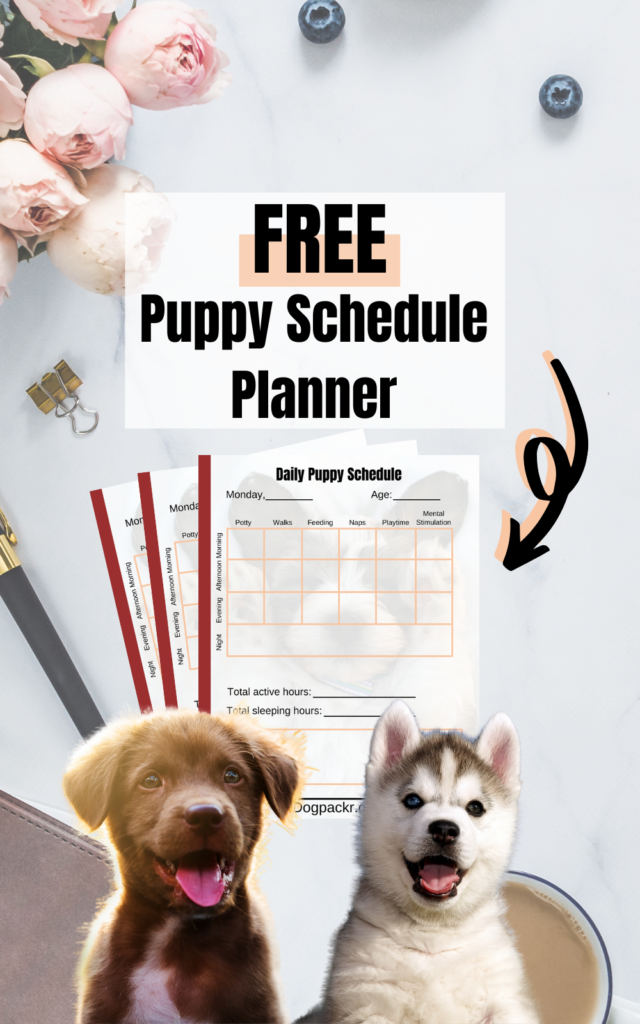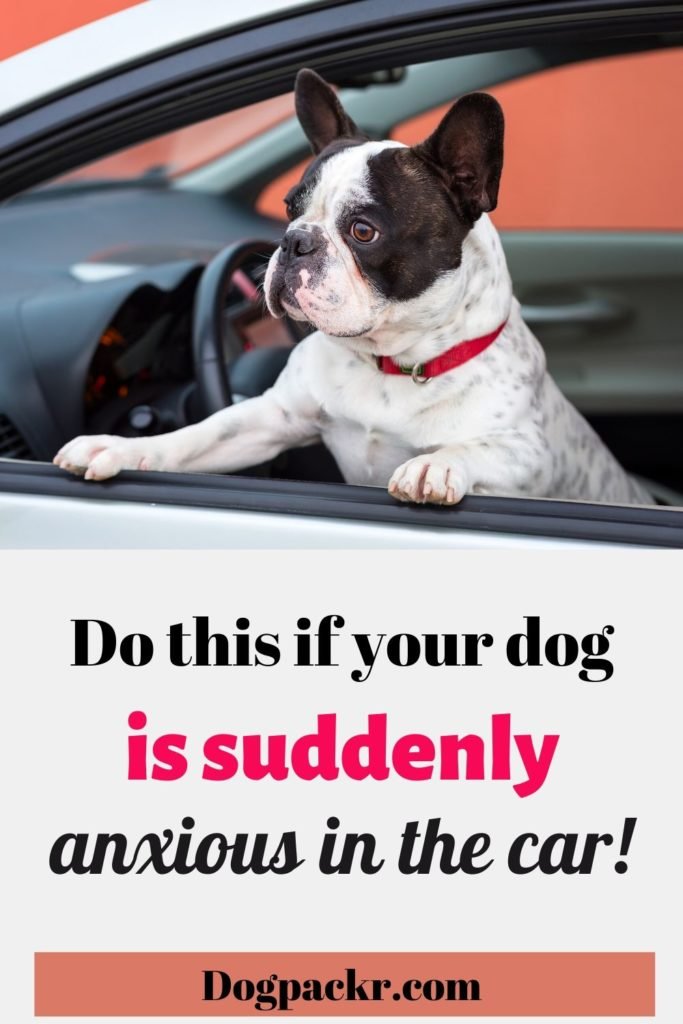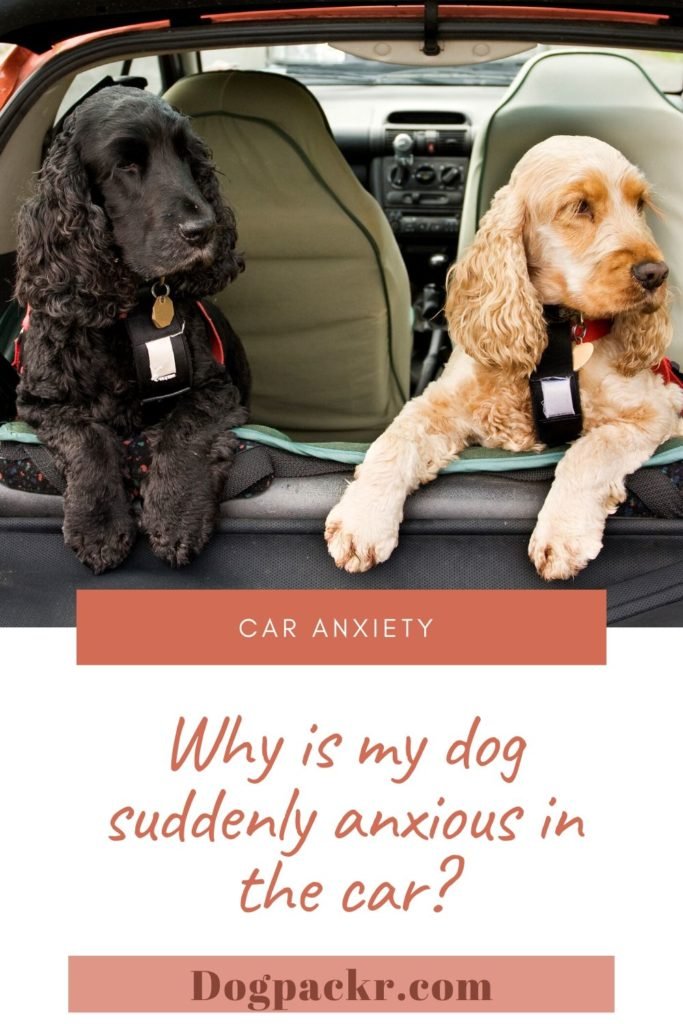
Why is my dog suddenly anxious in the car? Or why does he suddenly become scared of anything?
This is one of the big mysteries in dog kingdom: how can a dog suddenly be afraid of something he used to love or at least be ok with?
In short: there are a number of reasons, but in most cases it has to do with negative association. As I’ve pointed out in my post concerning the question about what you can do if your dog hates his crate all of a sudden, it’s very helpful to find out what causes his sudden fear or aversion.
Negative association can come in one form or another. For instance it’s possible that he associates pain or an uncomfortable feeling, loud noise or unpleasant smells with being in the car.
Most of the times you probably won’t find out, what exactly causes your pup’s sudden anxiety. In this case I recommend counter conditioning. With enough patience and love, it should be possible for almost any dog to like, or at least accept car riding again.
If your dog’s car anxiety has been present ever since the first time you had him in your car, make sure to check out my article on how to cure cog car anxiety.
Table of Contents
Why is my dog suddenly anxious in the car?
1. Negative association
It’s usually pretty difficult to find out, what could cause a negative association for a dog.
Especially concerning car rides, there are a million possibilities of negative things that your pooch now associates with being in the car. This could be your last vet appointment, some loud noise from outside while you were driving, something in the car looks scary, something smells weird and so on. Since you probably won’t find out what exactly causes his newborn anxiety, your best bet is to try counter conditioning, also called desensitizing.
However, the rest of the list consists of some of the more obvious things that may cause your dog to suddenly be anxious in the car. So you can try to look out for these, first.
Most of the time it won’t be one of the other reasons, though and it’s something you would have never thought of. That’s why I’m starting with negative association in general.
How can I calm my dog’s anxiety in the car?
Negative association asks for counter conditioning. You have to teach your dog to love being in your car again! The best thing you can do is to give your pup loooots of time, treats and praise.
First, you need to find out at what point your pup starts to become scared.
Is it when you leave the house? In that case it can also have another reason.
Is it on the way to the car?
Is it only when you open the car?
Or when you go to the back of the car?
Does it start when you open his crate?
When you close his crate?
Or only when you start driving or even only after a few minutes of driving?
If a dog is suddenly scared of car rides, his fear can appear at different points. And that’s where you have to start.
Let’s assume that your doggo is already afraid when you’re on the way to the car. Now you need to make every part of car riding, including the way to your car, a fun experience!
Step 1: The way to the car
Take some super yummy treats or peanut butter and lead him with that. For mild anxiety, you might be able to walk straight to the car. In that case, only give him the treats when you’ve arrived at the car. Let him lick your hand but only let him eat it once you’ve arrived at the car. Repeat this until he doesn’t show any signs of anxiety anymore. If his fear is stronger and he starts to freeze or pull back, take a slower approach. Reward every step closer and then take a break. It might take a few days until he can walk to the car without getting stressed.
Step 2: Getting in the car
This can be a tricky step. It’s important that your dog decides to go in himself. Never force him in, this will only make things worse! If he used to jump in without any problems, take a helper who holds your dog, while you go in the backseat of your car. Now hold the treats (they have to be something he can’t resist!) towards the back of the car or through the crate bars, if you have a crate or a kennel. Try to encourage him to jump by saying it enthusiastically.
For strong anxiety, reward every step: Give him only a little bit of the treats if he goes closer to the car or puts his front paws up. And then give him a huge portion and lots of praise once he’s jumped in. If he jumps out again, that’s okay, we’ll get to that in the next step.

Step 3: Staying in the car/his crate
Okay, you’ve gotten quite far already, now it’s time for your pup to stay in the car or crate of his own free will. Now that you’ve made him jump in, you can make him jump again while you’re standing at the back of the car. Let him jump and reward him for as long as he stays inside. Only give him small bits. If he sits or lies down, give him a huge load! This way he understands that he gets rewarded when being calm.
Step 4: Close his crate and the car
For this step it’s best to have one of the passenger doors open in order to hear your dog.
Close his crate and immediately open it again. Then have it closed for a bit longer until you can leave it closed without him starting to be vocal or to shiver. Alternatively you can fill a kong dog toy with peanut butter and freeze it. This will give your pup about 15min of work and will distract him from anything that causes stress.
Once he’s quiet, also close the car door.
Repeat the same process until he manages to stay calm for several minutes.
Step 5: Start the engine
Does this trigger something in your pooch? If not, try to drive for a a few seconds.
If it does, leave the engine running until your dog has stopped whining or shivering for a moment, then turn it off again and keep trying. It’s very important that you don’t stop the engine when he’s showing signs of fear! Only stop it when he has momentarily relaxed. Once he’s fine with the engine running, only drive for a few seconds. Stop the car, get your dog out (when he’s calm) and make something fun like play with him or cuddle, whatever he likes best.
Step 6: Drive somewhere fun
Alright, almost done. Your dog remains relaxed all the way until you start driving. Now it’s important to stick this good experience to his brain. Make sure that the first few drives after this training are short and always end somewhere fun, like going for a walk, to the dog park, pet store etc.
Once you’ve gotten this far, you successfully implemented a counter conditioning and your pup should be fine with being in the car again!
Step 7: Patience and calm attitude
Bear in mind that the whole process can take between a few days to a few weeks, depending on what caused his sudden anxiety in the car and how strong it is. So be patient, you’ll get there eventually!
It’s also really important that you always keep a very calm attitude. This will rub off to your pupper and will help him accept car riding again.
Another thing that sometimes does wonders is a thundershirt or a snuggle puppy. These are both things that comfort your dog and help him feel safe. They’re particularly helpful if he’s experienced something scary in the car. Just try it out, most dogs love them because these are comforting things, even if they’re not scared of anything.
Now I wanna show you some more specific reasons why your dog might be suddenly anxious in the car that are fairly easy to spot:
2. Change of routine
Dogs love routine. And they can quickly get stressed if something changes.
Have you usually been driving during the same hours of the day but recently changed it? Or have you always been driving the same route and now your driving a different one? Or have you changed something inside the car or inside his crate?
Solution
If you’ve changed anything in the car recently, change it back, if possible, and see if your dog settles down again. In case you’re driving a different route, you just need to be patient, he’ll adapt soon.
3. Motion sickness
Yes, dogs can develop motion or car sickness and yes, it can happen all of a sudden. I think Baloo suffers from a mild form of it. He starts whining when we’re driving on a curvy road or also in stop and go circulation.
If your pooch has no problem getting in the car and is usually fine but then starts becoming nervous all of a sudden, this could be the reason. Observe your dog closely: when exactly does it happen? Is it – like with Baloo – when your car is moving stronger than when you’re just driving straight? Then he’s probably feeling nauseous even though he might look scared. Two very clear signs of motion sickness in dogs are heavy panting and vomiting, possibly accompanied by shaking.
Solution
As I’ve pointed out in my other post about car sickness in dogs, the best solution is actually prevention. The first thing I’d do is to not feed him a couple of hours before you drive with him. 2 other things that can help are ginger treats or a thundershirt to comfort him.
In case these prevention tips didn’t help, the most important thing is your reaction. Just stay calm and don’t make a big deal out of it. Once he stopped being vocal (if he is at all), stop for a quick break for him to get some fresh air. However, it’s very important that you only stop when he doesn’t show unwanted behavior, such as whining or barking! Otherwise you reward the bad behavior.
You can also crack the window a bit while driving. This is particularly important if it’s hot and your AC doesn’t really reach the back of the car. Fresh air usually helps with feeling nauseous.
What could also make him nauseous is when he’s standing and can look outside, that might get him dizzy. I highly recommend getting a crate or a dog seat belt as this forces him to sit or even lay down. This often helps a lot already.
4. Conditioned behavior
Some dogs try to test their boundaries. They might have found car riding alright but then one day, they decide, ok, I’m done with it!
How did you react? Did you immediately stop the car and try to calm him? In that case he probably learned that he gets attention when he’s being crazy or acting anxious. Therefore he’ll keep doing that because dogs love getting attention! It’s the same like one of the reasons why he might get excited in the car.
Solution
This asks for counter conditioning as well. It’s the same as with bad association, because he associates excited or seemingly anxious behavior with getting attention.
5. Pain
My parents’ dog suddenly got scared of car rides and didn’t wanna go into the car! When he was getting older, he couldn’t jump that high anymore, so he always hit his paw when he jumped in the car, which obviously hurt. Hence, he didn’t want to go in there anymore because every time he did, it was painful and he tried to avoid it.
If your dog doesn’t want to jump in the car anymore after a long day of hiking or an hour at the dog park, it’s also possible that he’s sore and simply can’t jump anymore.
Solution
Make sure that your pup has no problem jumping in the car and doesn’t hit himself. If he can’t jump so well anymore, try a dog ramp. Remember that you also need to condition him to actually use the ramp. This might seem scary for a dog at first.
6. Reasons due to his age
This is similar to number 5. But maybe it’s not actually pain but he’s just not strong enough to jump in the car anymore. Or his crate starts to become uncomfortable because he’s more sensitive. Joint problems an arthritis are quite common among elderly dogs. If you’re unsure, consult your vet.
What’s also common in elderly dogs is that they get sensitive ears which causes him to feel dizzy or nauseous.
Solution
For an elderly dog, a dog ramp is compulsory! Or you’ll have to carry him into the car, which is only an option for smaller dogs.
For all possible other issues, talk to your vet.
Conclusion
As you can see, in most cases it’s impossible to tell why your dog is suddenly anxious in the car.
If you don’t find the reason, just do some counter conditioning and in a few days or weeks, he should be fine again. To help your dog stay calm, you can also use calming dog treats, such as the ones from Juvapet, which readers have had great experiences with.
Make sure to check out my essential guide to traveling with a dog in a car next, to be fully prepared to hit the road!
*Disclosure: This post may contain affiliate links, meaning, I get a commission if you decide to make a purchase through one of my links, at no cost to you.



